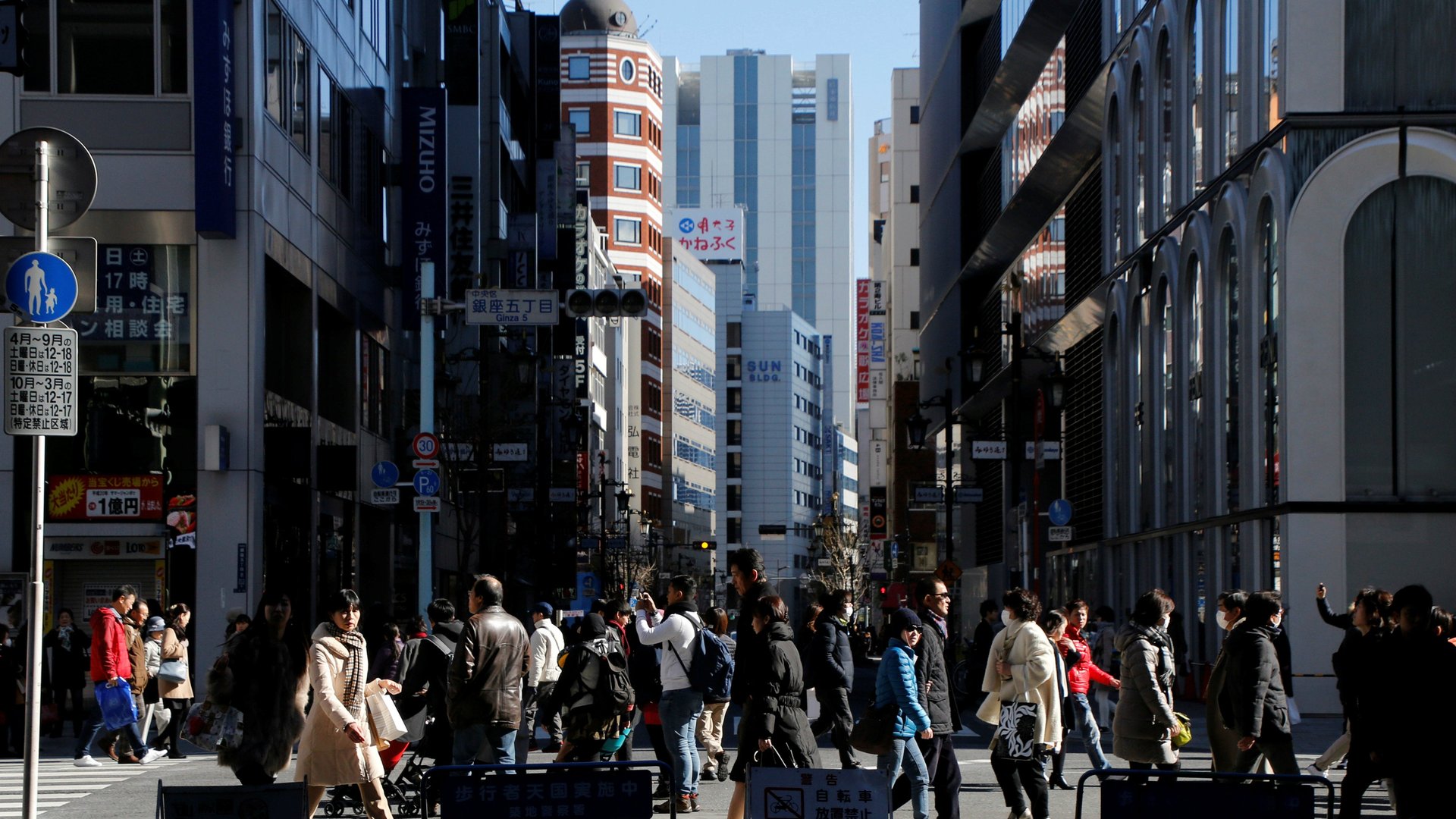The Japanese stock market’s 20-year high is still only half of its 1980s peak
The Japanese stock market is having an excellent run. Last week, the Nikkei 225 climbed to its highest level since November 1996. On Monday, the gains kept on coming and the benchmark index closed up another 0.5%.


The Japanese stock market is having an excellent run. Last week, the Nikkei 225 climbed to its highest level since November 1996. On Monday, the gains kept on coming and the benchmark index closed up another 0.5%.
Investors in Japanese stocks have plenty of things to get excited about right now. The IMF recently upgraded its outlook for the Japanese economy, due to a general increase in global demand and also the supportive polices of the government and central bank. Last week, the Bank of Japan’s governor Haruhiko Kuroda reiterated his commitment to keeping ultra-loose monetary policy until inflation rises from the current 0.5% level to the target of 2%, even as central banks in the US and Europe are tightening their policies.
Meanwhile, the current prime minister, Shinzo Abe, is expected to win big in the snap election he called for Oct. 22. This would see a continuation of “Abenomics,” a three-pronged effort to boost economic growth via loose monetary policy, fiscal stimulus, and structural reforms. In June, the IMF declared Abenomics a success (paywall), as the nation’s economy was enjoying its longest run of growth for more than a decade.
Still, Japan’s market is nowhere near its heyday of the 1980s. Today’s 20-year highs are still around 50% lower than the market’s all-time in 1989.
Back then, low interest rates spurred a real-estate asset bubble that sent stocks to unprecedented levels. When the bubble burst, the consequences were harsh, saddling Japan with two decades of stagnation. While a return to such inflated highs isn’t warranted—or wanted—the Japanese economy still has plenty of room to grow, which is reflected in investors bidding up stocks. However, an aging workforce and stubbornly low inflation stand in the way of persistent economic growth.